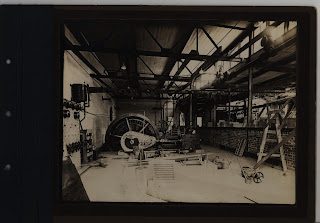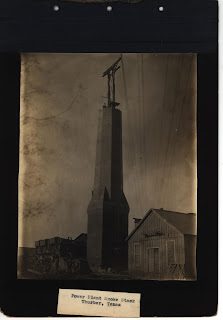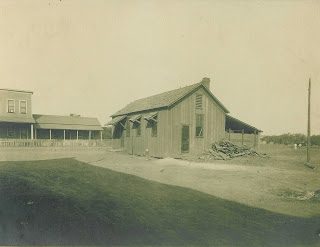Lighting Up Thurber…

by Kyndall Howard
Over a hundred years ago Texans walked in a land void of electrical conveniences. It wasn’t until the early 1880s that Texas claimed an electrical power plant, after which it was a slow process for industrial development. By the turn of the century, small privately-owned generating systems dotted the state. The coal mining company town of Thurber claimed this small feat. In fact, it wasn’t until the organization of rural electric cooperatives in 1936, when Thurber hit the end of its decline, that electrical usage became more widespread across all of Texas.

The year 1895 proved to be a ‘bright’ year for Thurber as company machinists graced its residents by building a small electric light plant. This action placed the company town as one of the first in West Texas to have such an industry. Built within a machine shop from scratch, this first dynamo (or generator) only reached a few essential shops, such as the opera house and some of the executive’s homes. However, in 1901, the operation established a big direct circuit generator, followed, a few years later, by an additional alternating current to accommodate the growing town. This allowed residential homes to obtain electricity on a wider scale. Every house was fitted with both circuits as electricity followed the installation of these new dynamos, which followed a rotating patter of ‘night’ and ‘day’ currents. According to certain sources, the direct current (DC) switched on in the evening. This system was invented in the late 1800s and offered a consistent current of electricity from either a generator or battery, to a fixture. The alternating current, a transformer that rotated power between low and high voltages and was better for sending electricity over larger distances, most likely operated during the day though various sources contradict each other on exactly when each circuit was used. In addition, a source claims that there was a set time of 4:00 pm for the circuit to switch, while another claims the cycle of the sun governed the change. Either way, the actions of the switching from day and night currents became a memory that remained with Thurber residents long after only a ghost town remained.
Monthly, company employees paid 25 cents per fixture bulb, which was deducted straight from their pay, for an endless supply of electricity. Other company conveniences, such as churches, received electricity and other utilities for free. Eventually, the entire town of Thurber became fully electrified, placing the town as one of the first towns in Texas to accomplish this feat.

Immediately adjacent to the power plant, the company established an ice plant, combining the two into one establishment. In 1908 and 1909, this joint plant underwent renovations. The ice plant received new coal boilers and stokers, and workers built a 148 feet smokestack that remains standing today. Seven years later, the boilers were switched from coal based, to being fitted to fire with natural gases from local sources and the electric power added to the AC generator. The power plant housed the official clock and steam whistle for the town, one of which emitted a loud shriek over the town to govern the workdays.
As darkness in our night’s sky continues to get lengthen this time of year, appreciation for electrical conveniences becomes especially welcomed. Most likely in much the same way that the folks in Thurber appreciated the innovated conveniences employed in their company town. If you find yourself driving along I-20 in Erath County, keep an eye out for the one remaining, perhaps lonely smokestack, still standing as a reminder of Thurber’s once “bright” past.





